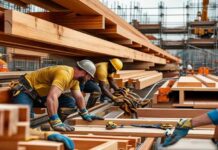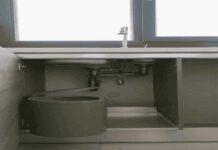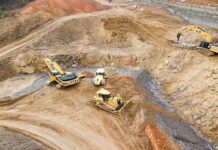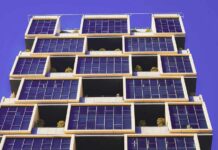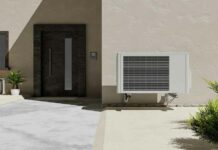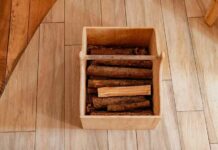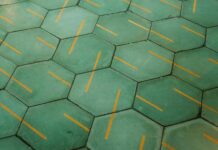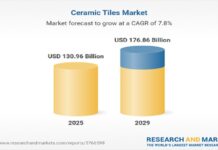A do-it-yourself (DIY) approach to home renovations and improvements can bring a great personal sense of satisfaction and accomplishment.
You can make your DIY project a long-term building goal or just a weekend hobby, complete tasks on a schedule of your choosing, and develop your skills, all whilst making those changes you’ve always wanted at a low cost.
However, if you’ve tried shopping for building materials, you know how overwhelming it can be given the number of products to choose from. Well, the starting point is picking the most suitable material.
You want to avoid mistakes right from the start because that could mean ending up with material 1) that’s hard to cut, 2) one onto which paint won’t stick, or 3) one that isn’t strong enough. It’s an experience that can destroy your DIY confidence and waste your money. To complete a building project successfully, you must know the best materials to use from the many options available.
We’ve compiled a list of the best materials for different DIY projects and ways to use them for the best results. We’ve also included tips to help you get the most out of your building material. Read on!
1. MDF (Medium Density Fibreboard)
MDF is a popular sheet material. An engineered wood material made by binding wood fibres using thermosetting resins, MDF has a broad appeal that makes it excellent for a diverse range of applications. For example, it’s popular for:
- Cabinetry
- Doors
- Incorporating into roofing materials
- Soundproofing buildings
- Flooring
- Framework
- Interior trim
- Making decorative pieces
MDF boards come in various sizes, and although they lack the natural look of solid wood, they have a definite beauty that upgrades the look of any space where they’re used.
One of the qualities that make MDF such a hit among novice DIY-ers and experts is that it’s easy to handle. You can cut, shape and join pieces of MDF with ease. And because it has uniform thickness and density, it gives precise results when cut. It’s also easy to sand and paint.
2. Solid Wood
Wood has consistently retained its popularity over the years, and for good reason. It’s sturdy, durable, and highly aesthetic. Its high load-carrying capacity means it can support structures better than many alternative materials.
You can use solid hardwood sheets for:
- Wall construction
- Flooring
- Ceiling
- Interior joinery
- Mouldings
- Furnishings
Solid softwoods are good for:
- Furniture
- Shelving
- Door and window frames
- Doors
- Interior trim
- Panelling
An outstanding quality that makes wood sheets a top material choice for construction is its resistance to temperature changes. It will not not expand or contract when exposed to heat or cold temperatures. Because of this, products made from wood maintain their structural integrity in the face of temperature fluctuations.
Additional qualities that make wood ideal for construction are:
- Resistance to heat and electrical currents
Dry wood is highly resistant to electrical current and is widely used for electrical insulation.
- High tensile strength
Wood may bend but will not break under pressure, a property that makes it suitable for making structures that are constantly exposed to pressure.
- Acoustic properties
Wood’s acoustic properties make it ideal for architectural use. It amplifies sound waves, boosting audio reverberation in performance halls, theatres, lecture halls and conference rooms.
Cost is the only obstacle preventing most folks from using wood to build or enhance spaces, given that it’s among the most expensive sheet materials.
3. Particleboard
To make particleboard (chipboard), manufacturers compress wood chips and resin under high pressure in a process that resembles that of manufacturing MDF. Because wood chips are readily available, particleboard is widely accessible and affordable.
Best uses for particleboard include:
- Flooring underlayment
- Cabinetry
- Shelving
- Modular furniture
- Packaging
- Construction of temporary structures
Particleboard sheets have a consistent density, which makes working with them easy. They are easy to cut and mould, and the finish is clean.
4. Hardboard (High-Density Fiberboard)
HDF is similar to MDF in some ways, with the main difference being that the latter is made from finer wood fibres. The fibres are compressed under high pressure and joined using a binding agent.
Hardboard can be used for:
- Furniture making
- Interior trim and finishes
- Underlayment of laminate surfaces
To Wrap Up
When choosing building materials, consider the function of the final product. Some materials are simply easier to work with than others. If you’re only starting out, begin with friendly materials, like pre-cut timber. Then choose the right tools to go with each. High-quality materials are ideal, but they’re expensive. Stay on top of your spending by prioritising essential areas for premium materials and using cost-effective options like chipboard for less critical parts.
FAQs
1. What are the top 5 essential building materials for a DIY project?
The top 5 essential building materials are MDF (Medium Density Fibreboard), solid wood, particleboard, hardboard, and insulation. These materials are versatile and commonly used in various DIY projects.
2. Where can I purchase DIY materials?
You can purchase these materials at home improvement shops, hardware stores, online retailers or specialised building supply websites.
3. How do I determine the best lumber sheet for my project?
The project you’re doing determines the lumber sheet to use. For example, if working on an outdoor installation, choose lumber that is treated for protection against moisture and insect damage.
4. Can I use plywood instead of drywall for walls and ceilings?
Drywall is usually preferred because it’s easier to install. Plus, it’s fire-resistant and has a sleek finish.




